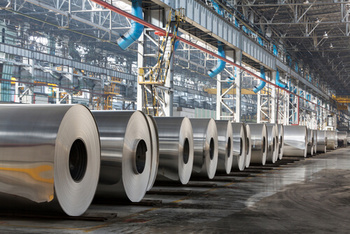When it comes to metal fabrication and welding for your next construction or custom project, understanding the process behind TIG welding aluminium can give you clarity and confidence.
Whether you need aluminium railings, balustrades, frames, or precision components, TIG welding offers a highly controlled, professional finish, especially for thinner materials or detailed applications.
In this guide, you’ll discover what TIG welding aluminium involves, why it’s ideal for certain jobs, and how it compares to other options. We’ll walk you through the essentials, no technical jargon, just clear explanations that help you make informed decisions.
What Is TIG Welding Aluminium?
If you’re investing in custom metalwork or construction, it’s important to understand the techniques that deliver precision, strength, and clean results. TIG welding aluminium is one of those techniques, and it stands out for good reason.
This process, formally known as gas tungsten arc welding (GTAW), uses a non-consumable tungsten electrode to generate a controlled arc.
With the help of a high-purity shielding gas and a carefully selected filler metal, it creates a clean, focused weld puddle that fuses aluminium with exceptional accuracy.
What makes TIG welding aluminium so effective is the level of control it offers. Rather than relying on automatic wire feed like other methods, this process gives the welder the freedom to manually add filler metal only where it’s needed.
That means greater precision, especially when working on thin materials, intricate joints, or custom-built components that demand a flawless finish.
It’s a slower, more deliberate method, but that’s exactly why it’s the preferred choice for projects where appearance, durability, and weld quality truly matter.
Why Aluminium Welding Requires Special Attention

Aluminium is a popular choice in modern builds because it’s strong, lightweight, and naturally resistant to corrosion.
However, behind those advantages lies a hidden challenge: not every welding method is equipped to handle it.
Unlike other metals, aluminium forms a thin but stubborn oxide layer on its surface. Here’s the catch: this layer has a much higher melting point than the metal underneath.
If it’s not properly cleaned and removed before welding, it can act as a barrier, blocking proper fusion and compromising the final result.
That’s why aluminium welding isn’t something to leave to chance. Precision matters.
If the oxide layer isn’t completely removed, even the most well-intended weld can end up brittle, uneven, or prone to failure down the track.
Choosing the right welding process and the right team means knowing these details are taken seriously from the very first spark. Because in aluminium welding, what you don’t see can absolutely affect what you get.
Key Components Of TIG Welding Aluminium
Behind every clean, precise aluminium weld is a carefully orchestrated process guided by a welder’s skill and supported by tools designed for accuracy.
Understanding these key components can help you recognise why TIG welding delivers the control and consistency your project deserves.
The TIG Torch
Think of this as the welder’s paintbrush. The TIG torch generates the arc and allows the operator to guide heat with pinpoint precision, focusing it exactly where it’s needed on the base metal.
That level of control makes all the difference, especially on detailed or delicate work.
The Tungsten Electrode
At the heart of the TIG torch is a rare-earth tungsten electrode engineered to withstand intense heat without breaking down.
By adjusting between electrode negative and electrode positive settings, the welder can fine-tune the arc’s behaviour, ensuring better stability, deeper penetration, and a smoother finish.
Filler Rod Or Filler Metal
Here’s where craftsmanship truly shines. TIG welders manually add filler metal to the molten weld pool, layer by layer.
This method allows for targeted reinforcement of the weld area, tailored to your project’s exact needs. The result? A stronger, neater join that holds up beautifully over time.
Foot Pedal
More than just a convenience, the foot pedal is the welder’s heat control system.
It lets them respond in real time to what’s happening on the metal, reduce heat input when needed to avoid burn-through, or increase it slightly to prevent a lack of fusion.
Maintaining proper heat input means cleaner welds, fewer errors, and far less risk to your materials.
These components, when paired with professional-grade TIG machines, ensure consistent results across a wide range of applications.
Benefits Of TIG Welding Aluminium For Your Project
When the outcome matters, whether visually, structurally, or both, TIG welding aluminium brings a unique set of advantages that directly support your project’s success.
It’s not just about joining metal. It’s about achieving results that look refined, last longer, and leave nothing to chance.
Here’s how TIG welding helps bring your vision to life:
- Precision you can see
- A Cleaner, neater finish
- Versatility with confidence
- Strength that lasts
- Total control over the outcome
Common Uses For TIG Welding Aluminium

When precision, appearance, and long-term durability matter, TIG welding aluminium is the method professionals rely on. But what does that mean for your project?
The answer lies in the everyday structures and custom builds that benefit from TIG’s clean finish and refined control.
Here are just a few of the ways TIG welding aluminium adds value to modern projects:
- Custom staircases and railings
- Boat and marine components
- Structural framing
- Light fixtures and sign brackets
- Furniture and display pieces
- Air conditioning and ductwork parts
Preventing Welding Issues With TIG
While TIG welding aluminium is known for its precision and clean results, even the most advanced technique relies on one thing: proper execution.
When every detail matters, it’s crucial to understand where things can go wrong and, more importantly, how skilled professionals prevent them.
Here are some common challenges that can affect weld quality if not properly managed:
Too Much Heat
Material thickness matters. Excessive heat input can lead to distortion, warping, or burn-through, especially on thinner materials.
This is why real-time heat control, often through a foot pedal, is a game-changer for delicate aluminium work.
Not Enough Heat
On the flip side, insufficient heat causes poor fusion, leaving behind weak or brittle welds that may not hold up under pressure.
Maintaining the right temperature throughout the weld is critical for long-term strength.
Improper Cleaning
Aluminium’s natural oxide layer has a higher melting point than the base metal. If not completely removed, it leads to contamination, porosity, and weak joints.
That’s why proper surface prep, including wire brushing and the right AC balance, is never skipped.
Wrong Travel Speed
The pace at which the welder moves affects both weld bead size and consistency. Move too fast, and the weld may not bond properly.
Too slow, and you risk excessive heat buildup. Consistency is key and experienced TIG welders know how to strike that balance.
Unstable Arc
An unstable arc, often caused by incorrect tungsten shape, frequency settings, or contamination, can lead to arc wandering, which reduces accuracy and compromises the consistency of the weld bead.
Proper setup, including AC balance and frequency control, helps stabilise the arc and deliver a smooth, clean weld.
While these issues can compromise results, the good news is they’re entirely avoidable in the right hands.
With trained TIG welders who understand the nuances of aluminium, every decision, every adjustment, is made to produce high-quality welds.
Because in metalwork, it’s not just about joining two pieces; it’s about ensuring they stay joined for years to come.
Frequently Asked Questions
How long does TIG welding take?
It’s a slower process than MIG, but the trade-off is a neater, more controlled weld. Turnaround depends on project size and complexity.
What kind of gas is used in TIG welding aluminium?
Pure argon is used to shield the arc and protect the molten weld pool from contamination.
Is TIG suitable for stainless steel or mild steel?
Absolutely. TIG is highly versatile and offers the same precision benefits across stainless steel, mild steel, and other metals.
Conclusion
Choosing TIG welding aluminium means prioritising quality, precision, and a cleaner finish. While it may take a bit longer than other methods, the results speak for themselves.
Whether you’re after fine detail, structural integrity, or a weld that enhances the overall appearance, TIG provides the flexibility and reliability to deliver on your vision.
When you need metalwork that truly reflects craftsmanship without compromising on strength, partner with professionals who understand the science and art behind TIG welding.
If you’re planning a custom metalwork or construction project and want results that are not only strong but also beautifully finished, we’re here in Melbourne to help.
Our team of skilled TIG welders in Australia is ready to guide your project from design to delivery.
Reach out today to Star Sheetmetal at (03) 9000 0280 to discuss your needs, get tailored advice, and receive a quote.
Let TIG welding aluminium be the difference your project deserves.
Sources
Master The Trade: Benefits Of TIG Welding. (n.d.). Welding Career Now. Retrieved June 25, 2025, from https://weldingcareernow.com/articles/master-the-trade-benefits-of-tig-welding
TIG Welding Technique. (n.d.). MIG Welding – the DIY Guide. Retrieved June 25, 2025, from https://www.mig-welding.co.uk/tig-technique.htm
Universal Technical Institute. (2025, March 14). How To Weld Aluminum: The Beginner’s Guide. UTI Corporate. Retrieved June 25, 2025, from https://www.uti.edu/blog/welding/aluminum-welding
